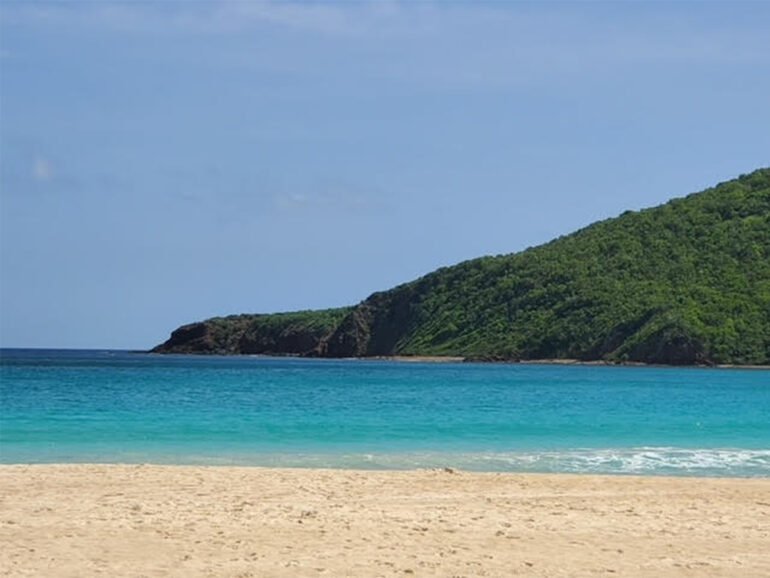Suddenly the water turns a brighter shade of blue. Or turquoise. Or indigo. Which is it? Just 17 miles east of Puerto Rico, Culebra feels far more remote than the distance suggests, and just as it’s hard to classify the colors of the water, just so is it hard to define this little island. This tiny island has no high-rises, no cruise port, and no real rush — just a handful of roads and beaches that feel like they’ve been left untouched.
This is where the Caribbean slows to its purest pace. The mornings are quiet, filled with the sound of waves instead of traffic. The nights are dark, the stars sharp and clear. Visitors come for a day and end up staying longer, finding themselves caught in the island’s easy embrace.
What makes Culebra remarkable is its scale: just seven square miles, home to fewer than 2,000 residents, with more beaches and coves than you could ever count. It isn’t about luxury towers or sprawling resorts. It’s about the essentials — clear water, soft sand, and a setting that makes you feel like the island is your own.
The Beaches
Flamenco Beach is the centerpiece, a perfect arc of white sand that consistently ranks among the world’s best, and we agree. The water is calm and shallow, ideal for long swims or simply floating in turquoise seas. Tamarindo is known for its snorkeling, where turtles drift through seagrass beds just offshore. Zoni Beach, long and nearly empty, is the place for solitude, where the only footprints might be your own. For even more privacy, small beaches like Carlos Rosario and Playa Brava reward those willing to hike or kayak their way in.

What to Do
Life on Culebra revolves around the outdoors. Snorkeling is a must, with coral reefs teeming with fish just steps from shore. Kayaks and paddleboards open up hidden coves and mangrove channels. Scuba divers find shipwrecks and reefs in waters that remain largely untouched. On land, the pace is just as gentle: renting a golf cart or jeep to circle the island, pausing at viewpoints, or browsing the handful of shops and cafes in Dewey, the island’s only town. Evenings are quiet, often ending with a casual dinner of fresh seafood at a local eatery.
Where to Stay
Culebra’s lodging options are limited, which is part of the charm. Most people tend to opt for vacation rentals and Airbnbs.
Club Seabourne, the island’s signature boutique hotel, offers accommodations set among lush gardens. Hammocks hang on porches, the pool is lined with palms, and the restaurant serves fresh island flavors. With fewer than two dozen rooms, it feels private and personal — more like staying in a friend’s villa than a resort. Smaller guesthouses and vacation rentals dot the island, but every option keeps with Culebra’s scale: small, quiet, and relaxed. The best part? The price. Rooms are as low as $179 per night right now during the shoulder season.
Where to Eat and Drink
For an island this small, Culebra has an outsized dining scene. The Sandbar is a lively stop for cocktails by the water, a place where you can sip Barrilito with your toes nearly in the sand. Dinghy Dock, perched on the waterfront in Dewey, is an island institution — casual, social, and perfect for fresh fish and conch fritters as the sun goes down. Together, they give Culebra’s evenings as much flavor as its beaches.
But this is very much a BYOB island. Take your bucket of Medalla light and head to a quiet cove with no one around.
How to Get There
Despite its hidden-away feel, reaching Culebra is simple. Ferries run from Ceiba on Puerto Rico’s east coast, a scenic ride of about 45 minutes. But the most seamless route is by air: Cape Air offers daily flights from San Juan, a 35-minute hop on small planes that land directly on the island’s runway. The flight is part of the adventure, tracing a path over clear Caribbean waters and offering bird’s-eye views of the smaller islands of the Spanish Virgin chain.
Karen Udler
2025-09-19 21:27:00

